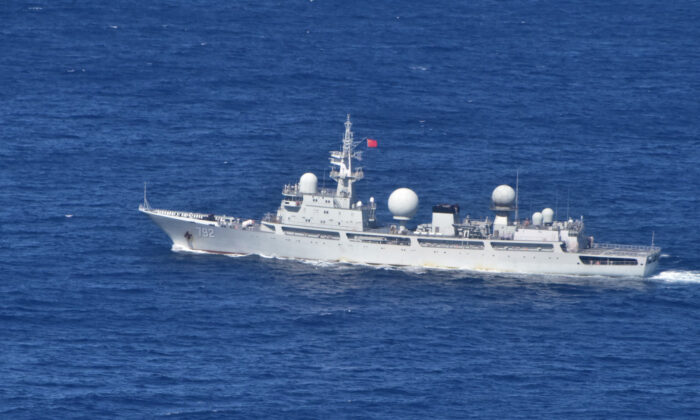Commentary
Australia acknowledges the necessity to strengthen its naval capabilities to deter these incursions. However, there are critical questions regarding the structure and effectiveness of its maritime defense strategy. To address these emerging threats, Australia must bolster its maritime defense and amphibious capabilities by adopting a structured approach based on U.S. Navy and Marine Corps principles—specifically, sea control, power projection, and expeditionary logistics.
Australia’s naval forces, while modern and capable, currently lack the scale and logistical infrastructure to sustain operations far from shore bases. Given the risks to strategic sea routes and valuable offshore resources, addressing these deficiencies is crucial. To deter conflict and uphold regional stability, Australia must expand its capability set to give Beijing pause.
Floating Forward Operating Bases (FOBs) are valuable assets in the Indo-Pacific, where establishing shore bases may be challenging. By utilizing MPSVs and MOBs, Australia can deploy a flexible maritime force capable of responding to various threats across vast oceanic regions. This suite of capabilities would not only serve as a deterrent but also enable the interception of PRC gray-zone activities such as fishing fleet harassment, surveillance, and unmarked military vessel operations near Australia.
International vendors, many of whom already collaborate with the U.S. Navy, offer Australia a range of proven autonomous platforms for logistics and reconnaissance. These autonomous systems can operate in high-risk areas with minimal human oversight, ensuring the delivery of critical supplies like fuel, munitions, and medical support to forward operating units even in hostile conditions.
Initial autonomous platforms can be quickly obtained from partners in North America, Europe, and Israel. Collaboration with Australian manufacturers can also enable local production, strengthening the domestic supply chain. This strategy expedites platform deployment, provides resilient sustainment options, and enhances Australia’s maritime independence.
With China’s expanding naval presence, it is imperative for Australia to not only defend its territorial waters but also project force into contested regions when necessary.
By establishing partnerships with international shipbuilders in South Korea, Japan, and select European nations, Australia can expedite the acquisition of new amphibious platforms tailored to specific expeditionary needs.
These shipbuilders possess the expertise and manufacturing capabilities to deliver advanced, resilient amphibious vessels within shorter timelines. Additionally, Australia can repurpose existing large commercial offshore support vessels (OSVs) for amphibious roles, reducing procurement costs, accelerating timelines, and ensuring rapid operational readiness.
Furthermore, these amphibious platforms can play a crucial role in allied exercises and regional partnerships, reinforcing Australia’s dedication to joint defense initiatives. Advanced amphibious ships not only enhance Australia’s national security but also strengthen ties with Pacific allies, presenting a unified front against PRC aggression.
Failure to take action now could lead to a weakened ability to effectively respond to future crises, putting Australia’s sovereignty and its role as a stabilizing force in the region at risk. It is crucial to invest in an expanded and resilient maritime capability as Australia faces a more challenging and complex security environment.
Please note that the opinions expressed in this article are those of the authors and may not necessarily represent the views of the U.S. Marine Corps, the U.S. Navy, or the Department of Defense. Additionally, the views expressed in this article are the author’s own opinions and may not necessarily reflect the views of The Epoch Times.
Source link







